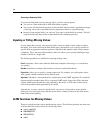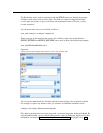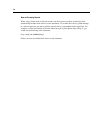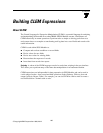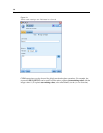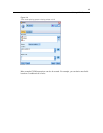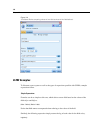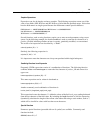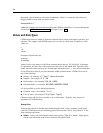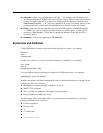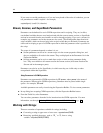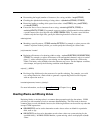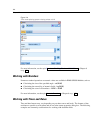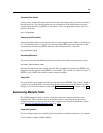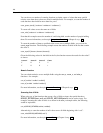
110
Chapter 7
Frequently, special function s are used in combination, which is a commonly used method of
flagging blan k
s in more than one field at a time.
@BLANK(@FIELD)-> T
Additional examples are d is cussed throughout the CLEM documentation. For more information,
see the t opic CLEM Reference Overview in Chapter 8 on p. 127.
Values and Data Types
CLEM expressions are similar to formulas constructe d from values, field names, operators, and
functions. The simplest valid CLEM expression is a value or a field name. Examples of valid
values are:
3
1.79
'banana'
Examples of field names are:
Product_ID
'$P-NextField'
where Product is the name of a field from a mark et basket data set, ’$P-NextField’ is the name
of a parameter, and the value of the expression is the value of the named field. Typically, field
names start with a letter and may also contain digits a nd underscores (_). You can use names that
do not follow these rules if you place the name within quotation marks. CLEM values can be
any of the following :
Strings—for example, "c1", "Type 2", "a piece of free text"
Intege r s—for example, 12, 0, –189
Real numbers —for example, 12.34, 0.0, –0.0045
Date/tim e fields—for example, 05/12/2002, 12/05/2002, 12/05/02
It is also possible to use the following elements:
Character codes— f or example, `a` or 3
Lists of items—for example, [1 2 3], ['Type 1' 'Type 2']
Charac ter codes an d lists do not usually occu r as field values. Typically, they are used as
arguments of CLEM functions.
Quoting Rules
Although the software is flexible when determining the fields, values, parameters, and strings
used in a CLEM expression, the following general rules provide a list of “best practices” to use
when creating expressions:
Strings
—Alwa ys use double quotes when writing strings ("T
ype 2" or "value"). Single quotes
can be used instead but at the risk of confusion with quoted fields.



